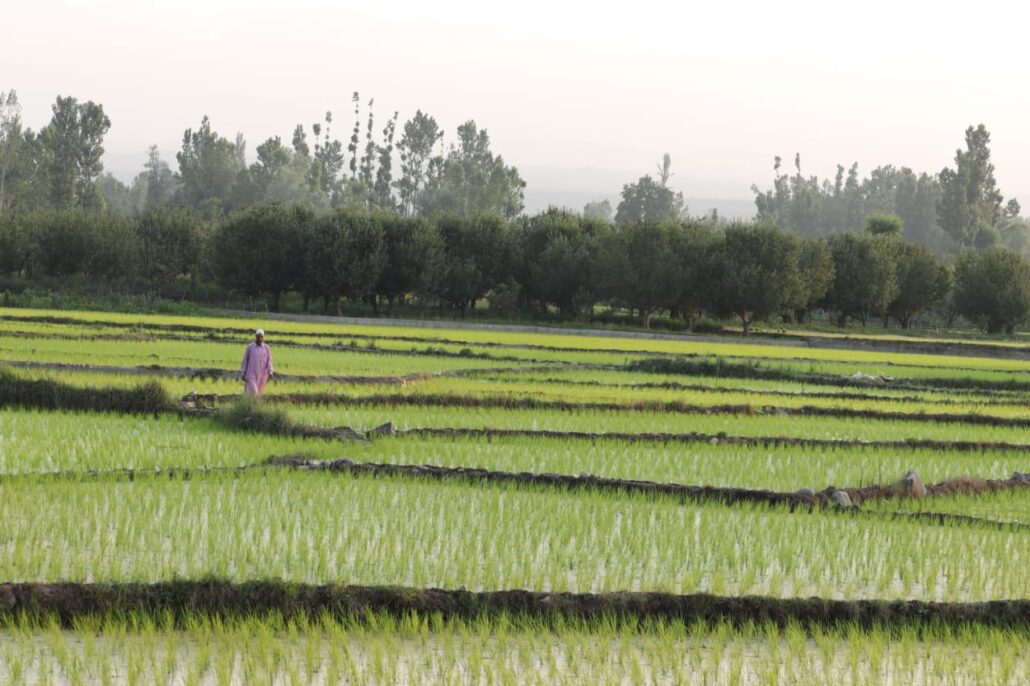
A complex agricultural scenario is unfolding in Kashmir, while the rice yield per hectare of paddy land is on the rise, there’s a concerning trend of continuous shrinkage in the available paddy land across the region, according to official figures.
Data from the office of the Department of Agriculture Kashmir, reveals that seven years ago, there were 135,000 hectares of land under paddy cultivation in the valley, however, the current figures paint a different picture, with paddy land having decreased to 129,000 hectares.
The decline in paddy land, despite the notable increase in rice yield per hectare, raises important questions about the long-term sustainability of agriculture in Kashmir. This trend is causing both experts and policymakers to take notice, as it may have significant implications for food security in the region.
The agriculture department acknowledges the positive aspect of this development—the significant increase in rice yield per hectare.
This suggests that farmers in Kashmir have adopted improved agricultural practices, resulting in higher rice production on existing farmland.
Such progress is commendable and contributes to enhanced food production efficiency.
However, the continuous shrinkage of paddy land can be attributed to various factors, including urbanization, land-use changes, and other socioeconomic factors. The encroachment of urban areas onto agricultural land is a common issue worldwide, and Kashmir is no exception. As cities expand, agricultural land often faces the pressure of conversion into residential or commercial areas.
Addressing this issue requires a multi-pronged approach. Firstly, it’s crucial to understand the reasons behind the loss of paddy land in the region, including urban planning policies and population growth trends. Identifying areas where agricultural land can be preserved or reclaimed is essential.
Simultaneously, efforts should be made to promote sustainable farming methods that can maximize crop production on the limited available land. Investing in modern agricultural technology, irrigation systems, and crop diversification can help farmers make the most of their smaller plots.
Furthermore, agricultural policies should prioritize the preservation of arable land to ensure food security for the growing population.
Encouraging initiatives that incentivize farming and protect agricultural zones can play a vital role in maintaining a balance between urban development and agriculture, researchers suggest.
While the increase in rice yield per hectare in Kashmir is undoubtedly a positive sign of progress, the continuous shrinking of paddy land remains a significant challenge. To secure the region’s food supply and preserve its agricultural heritage, concerted efforts are needed to address the factors contributing to this decline and promote sustainable farming practices.




